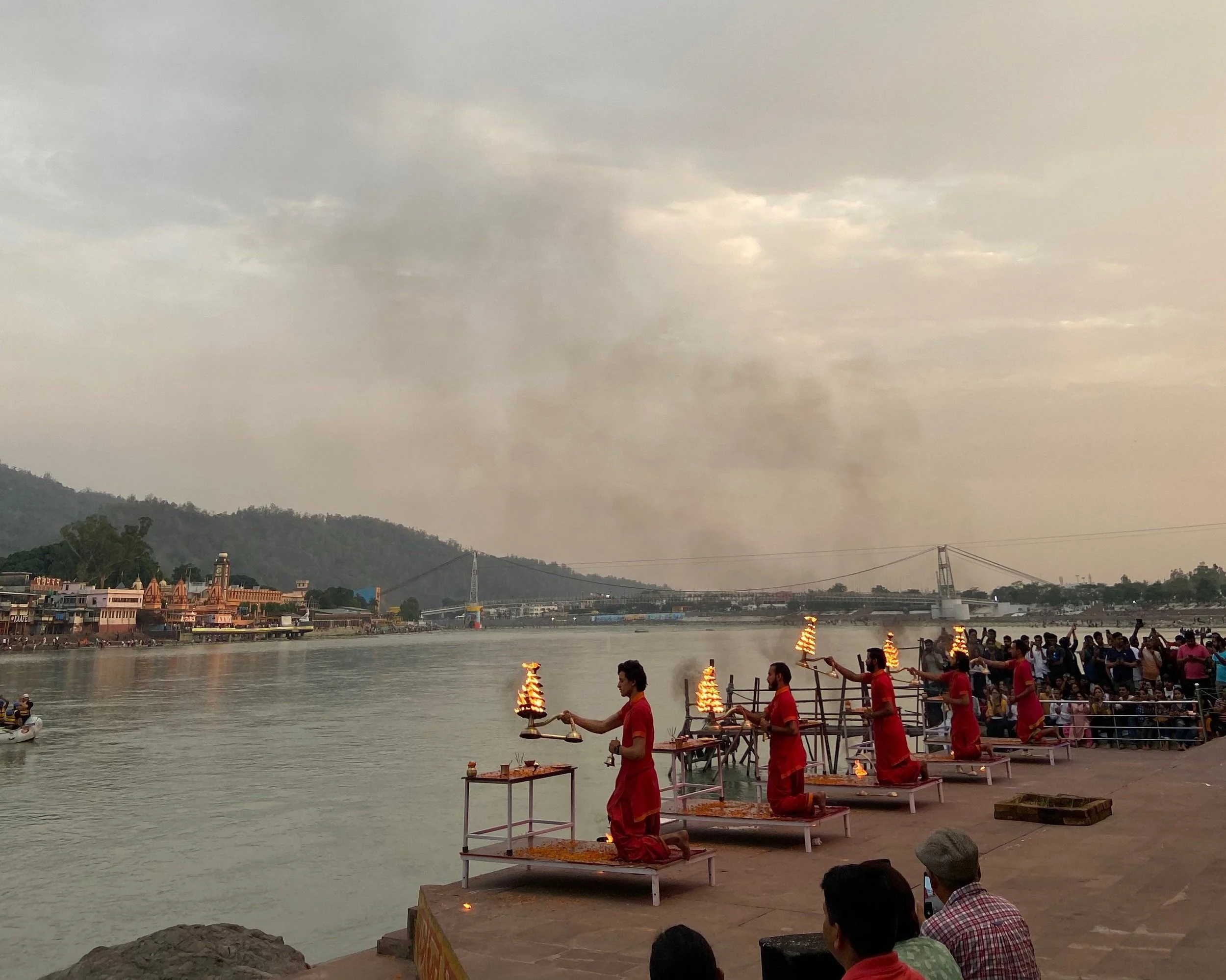Creating Sacred Space with Ingrid
The Power of Puja Altars in Yoga
At Croydon Yoga Hub, we believe that yoga is more than just movement, it is a holistic practice that encompasses breath, intention, and spirituality. The deeper dimensions of yoga invite us to look beyond the physical and seek connection with something greater than ourselves.
One way we can explore this spiritual dimension of yoga is through the creation of puja altars, sacred spaces that hold offerings and intentions, inviting us to pause and connect with the heart of our practice. Puja altars are not about perfection or elaborate rituals; they are about creating a space that feels meaningful to you, however simple or ornate it may be.
To shed more light on this ancient practice and how it integrates with our modern yoga journeys, we spoke with one of our teachers, Ingrid, who has embraced the practice of puja in her own life and teaching. She shares her understanding and experiences to inspire us all to find our own way of weaving devotion into our practice.
What is a puja?
“The word ‘puja’ comes from Sanskrit and means a ritual or ceremony in Hinduism. It is a way to show respect and devotion to gods or the divine. During puja, people offer prayers, chant mantras, perform rituals, and make offerings to receive blessings and strengthen their connection with the divine.”
What does puja mean to you personally?
“For me, a puja is a sacred moment to honour and connect with the Divine — that vast and loving force I truly believe surrounds and guides us. It’s a time to pause, open the heart, and offer devotion with sincerity and gratitude through the chants, the incense, the offerings, and the silence.”
How did you first come to practice puja as part of your yoga journey?
“My very first puja experience happened during a trip to Rishikesh for my 200-hour teacher yoga training. We had Sundays off, and on one of those days, we attended the Ganga Aarti — one of the most powerful and sacred ceremonies in India. During the ritual, fire, flowers, and prayers are offered to Maa Ganga, the goddess of the holiest river in India. I was completely captivated by the energy of the environment, the deep devotion, and the beauty of the ceremony.
That experience inspired me to learn more about pujas and their significance. When I returned to London after the training, I discovered the Sivananda Yoga Centre in Putney, where they regularly hold pujas with Vedic priests on important dates in the Hindu calendar. These ceremonies celebrate deities like Ganesha, Hanuman, and Shiva, with whom I’ve always felt a strong spiritual connection. Since then, I’ve continued to participate in these pujas, deepening my spiritual practice and my connection to the tradition.”
Ingrid in Rishikesh
Can you describe a typical puja you might do before teaching or practicing yoga?
“I initially only participated in pujas at the Sivananda Yoga Centre, but recently I’ve started learning how to do a puja myself through a course with my Vedanta teacher. We practice what’s called the ‘five-step puja’, a simplified version. There are specific steps that must be followed in a precise order for it to be considered a proper puja. In my practice, I offer a lamp, flowers, fruits, and I chant mantras from the tradition. There are also a few minutes for meditation.”
What would you say to someone who’s curious about puja but unsure where to begin?
“A puja is a beautiful ritual, rich with symbolism and powerful energy. It’s a moment of deep presence, a time to honour and connect with nature, the Divine, or simply the greater force that surrounds and supports all life, however you choose to name it.
One of the Niyamas mentioned in the Yoga Sutras is Ishvarapranidhana - the practice of surrender. A surrender isn’t about asking for something, it’s about showing up with a full heart to offer gratitude to this interconnected universe. And part of living a yogic life includes this ability to surrender, to trust, to believe, and to honour the space you live in and share with all beings.
If you feel curious about experiencing a puja, follow that feeling. Reach out to someone you trust who can guide you to a place that holds a traditional ceremony. Let that curiosity be a doorway, not into something foreign, but into something deeply human and universal.”
A ceremony Ingrid attended in Rishikesh
You can create your own puja with just a single candle and flower in your practice space or a more elaborate setup. These altars serve as gentle reminders to pause, breathe, and connect with your intention. May your practice be a reflection of your devotion, curiosity, and connection with the divine.
Ingrid will be sharing another devotional aspect of the practice in her Mantras & Yoga Nidra Workshop later this month. Be sure to book in if you want to continue to explore the rich tradition of yoga beyond the physical.



